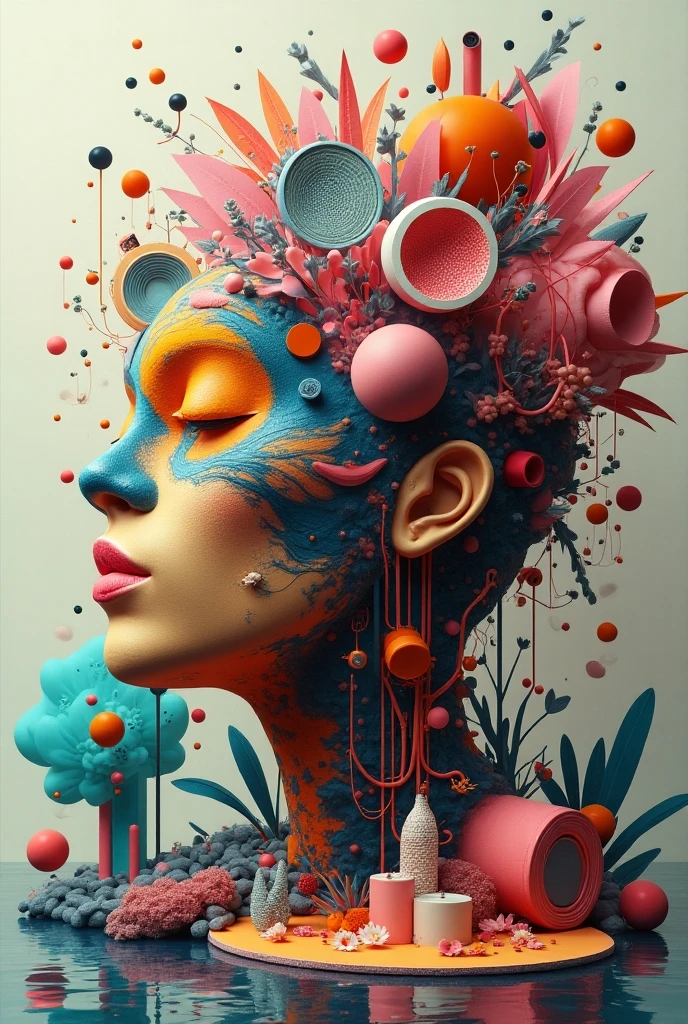

The Psychology of Color in Marketing
Color is a powerful tool in marketing, influencing consumer behavior and perceptions in profound ways. The psychology of color examines how different hues evoke specific emotions and reactions, which can significantly impact purchasing decisions. Understanding this psychological connection can help brands craft effective marketing strategies that resonate with their target audience.
The Emotional Impact of Color
Colors are not just visual stimuli; they carry emotional weight and can evoke feelings that influence consumer behavior. For instance, red is often associated with excitement and urgency, making it a popular choice for clearance sales and promotions. Conversely, blue tends to evoke feelings of trust and calmness, which is why many financial institutions and tech companies incorporate it into their branding [1].
Research indicates that up to 90% of snap judgments about products can be based on color alone, depending on the product category [1]. This highlights the importance of selecting the right color palette for branding and marketing efforts.
Color Associations and Brand Personality
Different colors are often linked to specific personality traits, which can shape how consumers perceive a brand. For example:
- Red: Associated with energy, passion, and action. Brands like Coca-Cola and Target use red to create a sense of urgency and excitement.
- Blue: Conveys trust, reliability, and professionalism. Companies like IBM and Facebook utilize blue to foster a sense of security and dependability.
- Green: Often linked to health, tranquility, and nature. Brands like Whole Foods and Starbucks use green to promote a sense of wellness and environmental consciousness.
- Yellow: Represents optimism and cheerfulness. Brands like McDonald’s use yellow to attract attention and create a friendly atmosphere.
- Purple: Associated with luxury, creativity, and sophistication. Brands like Hallmark and Yahoo! leverage purple to convey a sense of elegance and innovation [1][2].
These associations can vary based on cultural context and personal experiences, making it essential for marketers to consider their target audience when selecting colors.
The Role of Context in Color Perception
While certain colors may have general associations, the context in which they are used can significantly alter their meaning. For example, the color red can signify danger in one context (like a stop sign) but can also represent love and passion in another (like a heart). This duality emphasizes the importance of context in color perception and its implications for marketing strategies.
A study titled “Color in Context” suggests that the physical and psychological context in which a color is perceived influences its meaning and the responses it elicits [3]. For instance, a red dress may enhance attractiveness in a social setting, while the same color on a sports uniform might convey aggression and competitiveness.
Gender Differences in Color Preferences
Research has shown that color preferences can vary significantly between genders. For example, studies indicate that men tend to prefer bold colors, while women often gravitate towards softer hues [1]. Additionally, blue is the most favored color among both genders, but preferences for other colors can differ widely. Understanding these preferences can help brands tailor their marketing efforts to appeal to specific demographics.
For instance, cosmetics companies often use purple and pink to attract female consumers, while tech brands might lean towards blue and gray to appeal to a more gender-neutral audience. This strategic use of color can enhance brand recognition and consumer loyalty [1].
The Isolation Effect and Color Coordination
The psychological principle known as the Isolation Effect suggests that items that stand out from their surroundings are more likely to be remembered. This principle can be applied in marketing by using contrasting colors to draw attention to specific elements, such as call-to-action buttons on a website.
For example, if a website predominantly features a green color palette, a red call-to-action button can create a stark contrast that captures the user’s attention. This technique has been shown to improve conversion rates, as consumers are more likely to notice and engage with elements that stand out visually [1].
The Importance of Color Naming
Interestingly, the names given to colors can also influence consumer preferences. Research has shown that consumers tend to prefer products with creatively named colors over those with generic names. For instance, a shade labeled “mocha” is often perceived as more appealing than one simply called “brown” [1]. This phenomenon highlights the importance of branding and marketing language in conjunction with color choice.
Practical Applications for Marketers
To effectively leverage the psychology of color in marketing, brands should consider the following strategies:
- Understand Your Audience: Conduct research to understand the color preferences and associations of your target demographic. This can help tailor your branding and marketing efforts to resonate with consumers.
- Choose Colors Wisely: Select colors that align with your brand’s personality and the emotions you want to evoke. Ensure that the colors you choose fit the context of your product or service.
- Utilize Contrast: Use contrasting colors to highlight key elements in your marketing materials, such as calls to action, to improve visibility and engagement.
- Be Consistent: Maintain a consistent color palette across all branding and marketing channels to enhance brand recognition and recall.
- Test and Adapt: Experiment with different color combinations and monitor consumer responses. Use A/B testing to determine which colors yield the best results in terms of engagement and conversion rates.
Conclusion
The psychology of color in marketing is a complex and nuanced field that can significantly influence consumer behavior. By understanding the emotional impact of colors, the role of context, and the preferences of different demographics, marketers can create more effective branding strategies that resonate with their audience. As the landscape of marketing continues to evolve, the strategic use of color will remain a vital component in capturing consumer attention and driving sales.








